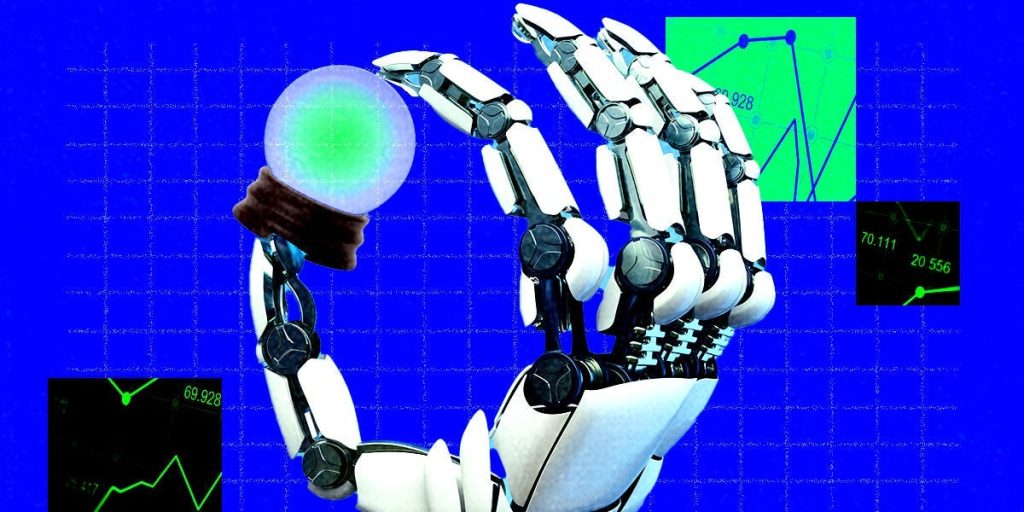China’s DeepSeek AI Sparks Market Volatility: Key Lessons for Investors
1. The Rise of DeepSeek and Its Market Impact
This week, China’s DeepSeek AI sent shockwaves through Wall Street, causing a significant decline in tech stocks, particularly Nvidia, which lost nearly $600 billion in market value in a single day. DeepSeek, a breakthrough AI model, demonstrated capabilities comparable to OpenAI’s best models while using far less computing power. This revelation raised concerns among investors about the future demand for Nvidia’s GPU chips, which are integral to powering large language models.
The implications of DeepSeek’s efficiency are profound. If other AI companies like OpenAI, Anthropic, and Meta adopt DeepSeek’s techniques, they could reduce their reliance on expensive computing resources. While this spells potential trouble for Nvidia and other hardware providers, it also opens up opportunities for AI adopters, particularly software companies, which saw their stocks rise amid the broader market decline. Salesforce, for instance, gained as much as 10% as investors anticipated lower AI costs and higher profit margins.
2. The Dangers of Market Concentration
The DeepSeek-fueled market volatility has highlighted the risks of market concentration. In recent years, a handful of mega-cap tech companies have dominated the S&P 500, with the top five stocks alone accounting for nearly 30% of the index as of December 31. These companies are often exposed to similar technological trends, making the market vulnerable to disruptions in investor sentiment.
During Monday’s sell-off, the index tracking mega-cap tech stocks plunged 3%, while the equal-weighted S&P 500 saw a slight gain. This disparity underscores the risks of concentration, which can amplify losses during market downturns. Experts like Chris Fasciano, chief market strategist at Commonwealth Financial Network, warn that concentration can be a double-edged sword—it may perform well in bull markets, but a narrative shift can lead to painful declines.
Steve Sosnick, chief strategist at Interactive Brokers, adds that many investors falsely believe they are diversified by holding S&P 500-linked funds. In reality, the extreme concentration of the index means that true diversification requires looking beyond these mega-cap stocks.
3. The Multilayered AI Story
While Nvidia has been the poster child of the AI revolution since the release of ChatGPT in November 2022, the DeepSeek event revealed that the AI story is more nuanced. Nvidia’s dominance stems from its role as a key supplier of GPUs, the "picks and shovels" of the AI gold rush. However, the efficiency gains demonstrated by DeepSeek suggest that the beneficiaries of AI may extend beyond hardware providers.
Software companies, which are increasingly adopting AI technologies, could see significant cost reductions and margin improvements. Salesforce’s surge during the market sell-off is a testament to this trend. If DeepSeek’s claims of lower resource dependence are accurate, AI adoption could become more accessible to smaller companies that previously couldn’t afford to partner with AI giants.
4. Crypto’s Correlation with Tech
The DeepSeek event also highlighted the intertwined fate of cryptocurrencies with the broader tech sector. Despite the AI-related sell-off primarily impacting tech stocks, Bitcoin dropped as much as 7%, mirroring the decline of the Nasdaq 100. This high correlation underscores the reality that crypto is not a safe haven but rather a high-risk bet on tech’s continued outperformance.
Steve Sosnick notes that safe havens, such as gold or government bonds, typically exhibit much lower volatility. In contrast, Bitcoin’s average daily volatility of 2% and its 80% price correlation with the Nasdaq 100 over the past six months reveal its vulnerability to broader tech market movements. This challenges the narrative that cryptocurrencies offer a diversification benefit during times of market stress.
5. Apple’s Prudent Approach to AI
Amid the market turmoil, Apple emerged as a standout performer, with its stock rising about 8% for the week. The company’s decision to avoid investing tens of billions of dollars in developing its own large language model appears to have been vindicated. Instead, Apple is leveraging OpenAI’s ChatGPT model and focusing on edge computing to deliver quick and efficient AI-driven responses to iPhone users.
The shift toward edge computing, which processes data locally on devices rather than relying on cloud servers, aligns well with the potential efficiency gains from DeepSeek. If AI models become less compute-intensive, the cost savings could enable companies like Apple to return more capital to shareholders through buybacks and dividends. Nicholas Colas, co-founder of DataTrek Research, notes that cheaper AI could supercharge these shareholder return programs.
6. Cheap AI and Its Implications for the Bond Market
The broader economic implications of DeepSeek’s breakthrough could extend beyond equity markets. If AI becomes more efficient and cost-effective, it could accelerate adoption across industries, boosting productivity without reigniting inflation. This scenario would keep interest rates lower for longer, benefiting bond markets that suffered during the Fed’s rate hikes in 2022 and 2023.
Jeff Buchbinder, LPL’s chief strategist, suggests that lower AI costs could reduce the Federal Reserve’s neutral rate and keep interest rates subdued. This would be a boon for bond investors, as lower rates translate to higher bond prices. Additionally, the democratization of AI—making it more accessible to smaller companies—could drive economic growth without inflationary pressures, further supporting the bond market.
In summary, the DeepSeek event offers valuable lessons for investors, from the risks of market concentration to the multifaceted nature of AI and its potential impact on bonds. While the AI revolution is still unfolding, one thing is clear: the intersection of technology, markets, and the economy will continue to shape investment opportunities and risks in the years to come.







